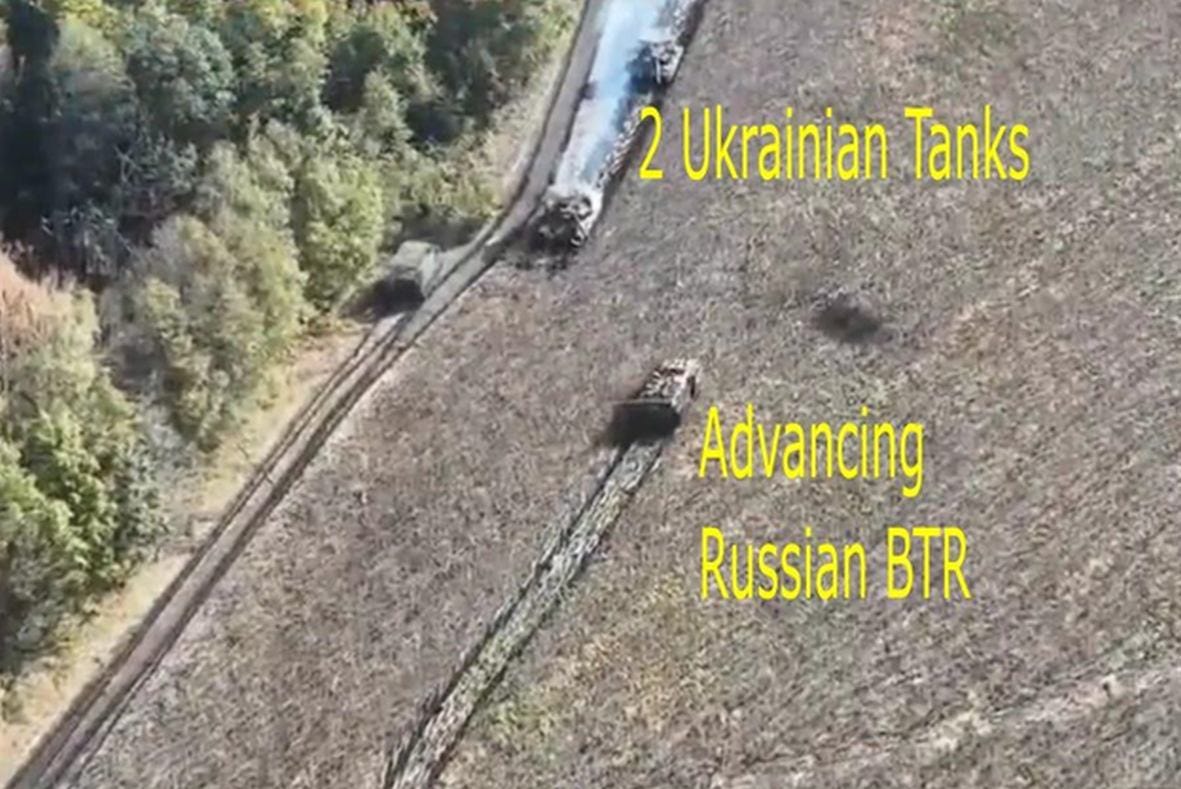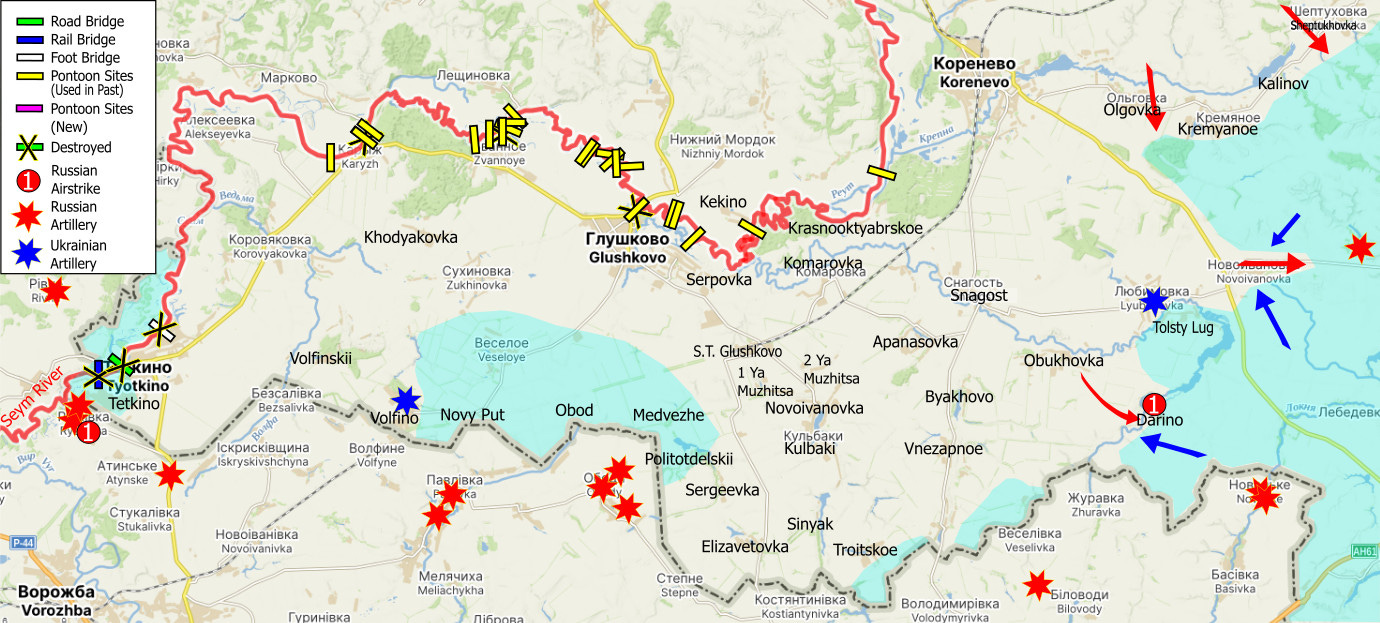Hello everybody!
One of most fascinating aspects of modern-day humanity is that so many things are going on - and yet: essentially, everything remains the same. And so, the war in Ukraine is raging with undiminished ferocity. Indeed, official Kyiv is reporting Russian casualties that are ‘breaking all the records’. And the US Minister of Defence is visiting Ukraine, these days, which is why now many are expecting ‘something to happen’. Even more so because there are additional ‘pledges’ for military aid for Ukraine from ‘the West’ for Ukraine… On the other hand, there is more evidence the North Korean troops are really in Russia. And yet, on the battlefield: the Russians are still grinding forward.
***
Kursk- Overview
In the opening days of the full scale war it was clear that Russian command and control was bad, as evidenced by 60 kilometer columns of vehicles, to generals being killed on the front line as they tried to resolve traffic issues. Their slow reaction to the Kharkiv and Kursk breakthroughs in 2022 and 2024 show that little has changed. Communication is a key factor in command and control, and in one sector vehicles were equipped with Starlink terminals that could provide them with their current location and communication with their commanders. Ukrainians said that their performance improved significantly, but that was an isolated case.
Throughout Ukraine, the battlefields are either static or are characterized by slow incremental gains by the Russians. The slow changes make it easier to understand where the front lines are and what, if any, changes have happened.
That is not the case in the western sector of Kursk. It is a much more mobile battlefield. With attacks and counterattacks, territory can change hands in a day or just a few hours. The battle lines aren’t straight and vehicles are attacked on their flanks as they are moving. And then, adding to the confusion, both sides still use Soviet-era weapons, adding a layer of complexity to identifying friendly or enemy vehicles. Markings on the vehicles help with identification. So does situational awareness. Situational awareness comes from the flow of information down from commanders to the front line soldiers, and Ukraine has much better situational awareness than Russia.
Here are three examples:
A Russian BTR approaches a Ukrainian T-64 tank (from the 17th Tank Brigade) with a second tank directly behind it. Normally, an enemy vehicle is engaged by tanks hundreds or even thousands of meters away. The Ukrainian tank first sees the BTR a couple hundred meters away as it moves around the corner of the woods. Since the BTR is not a threat to the tank, it has the luxury to take some extra time and confirm that the BTR is Russian. The tank moves its turret and the BTR continues to approach. At about 20 meters, the tank fires. Three survivors jump out. One report says they were captured but this is not shown on the video. The second tank also fired a round through the BTR. (One of the Ukrainian tanks was destroyed by a drone soon after).
In another engagement, a Russian BMP advances towards another Ukrainian tank. It stops in the middle of a field. Generally speaking, it is not a good idea to stop in the middle of a field with your infantry on board because you are easily seen, there is no cover and it's hard for the vehicle or infantry to escape when threatened. The Russian driver and commander are probably confused. They don’t get a chance to reconsider.
This event happened back in August, when this sector of the battlefield was even more mobile than now. A Ukrainian MRAP approaches a Russian BMP-3 from behind before spotting it. While assessing the situation, a Russian BMP-2 pulls up firing a single shot that flies over the MRAP. The MRAP cannot match one BMP, let alone two. But then a Russian miracle happens and the BMP-2 moves in between the BMP-3 and the MRAP. The Russian BMP-3 fires on the Russian BMP-2 at point blank range and the Ukrainian MRAP reverses as fast as it can.
In a mobile battlefield it can be difficult to determine where the enemy is. It requires aerial and ground units to stay in contact with enemy forces. The information must then be reported back to the command element and the command element must share the information with other units and its own subordinate forces.
It should be easier to determine where friendly units are. It also requires that subordinate units stay in contact with the command element and the command element must also share this information with other units. Computers can aid with communication, such as the Ukrainian application Kropyva. Some other control measures include, but are not limited to, vehicle markings, and plans that provide limits to movement or firing and radio communications. Command and control played a big part in Operation Shovel, a small unit action described later.
All armies are challenged by the need to maintain situational awareness on the battlefield and control of their own units. The more successful the army is, the more its combat power is multiplied. The Russian army generally has poor command and control, particularly with regards to communication, and this reduces its combat power. In a mobile battlefield such as Kursk, its combat power is further reduced. But it compensates in its traditional manner by using mass, or throwing more bodies and vehicles into the fight, and the weight of the mass is effective at the expense of lives and equipment.
***
Kursk- Western Sector
There were plenty of small engagements along the front lines, but after pulling back in various locations last week, Ukraine has consolidated its forces and held firm for this week.
A video of Ukrainian infantry pulling back at some point from the western side of the river near Darino.
Russia posted their own video of a destroyed Russian column west of Liubimovka. They later took the video down.
500 meters south of Zelenyi Shlyakh, a Russian BMP is destroyed. Another one was decommissioned inside the village itself. Ukrainians report that both vehicles belonged to the 155th NIB, troops of which are documented to have summarily executed at least two dozens of Ukrainian prisoners of war, the last few weeks.
The view from a Bradley as the 225th engages their enemy.
***
Kursk- Eastern Sector
After pulling back in the north, Ukraine was able to maintain its front line in the east despite the occasional heavy attacks.
Seven kilometers from the border and 14 kilometers from the front, one of two Russian rocket launchers is hit by a drone. They had just fired and were moving to a new position.
North of Ulanok, the Russians conduct a large assault.
(….to be continued…)








(The view from a Bradley as the 225th engages their enemy.)
That was a MARDER 1A3. Nope the specifics of the sloping frontal armor...NOT an M2/3 BFV.
Interesting to note russian command and control still bad. Suggests it's just easier to concentrate resources on arms and ammo instead of radios and basic training 🤷🏼♂️. Good for Ukraine, bad for your average russian soldier.